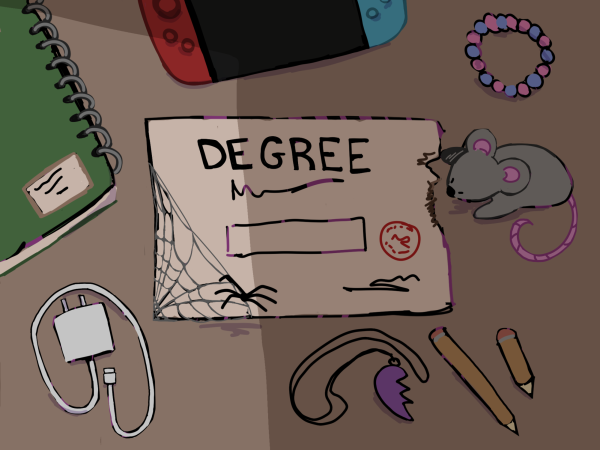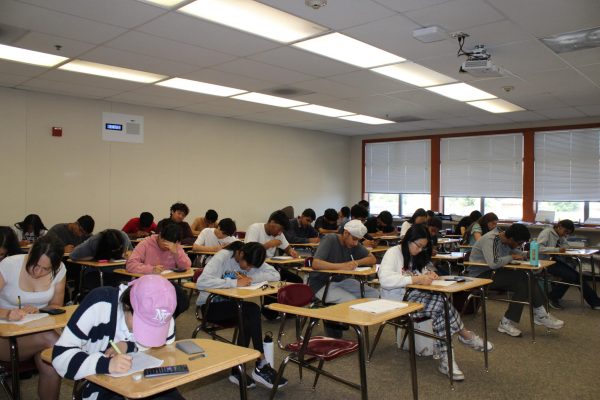Teaching minority history will encourage change
A lot of students are angered and disheartened when learning one-sided curriculum in history classes, especially when they’re a part of a minority group.
Many minorities underrepresented in history textbooks and curriculum include African-Americans, Latinos, Native Americans, members of the LGBT+ community, and members of religions other than Christianity.
Research finds that the overwhelming dominance of Euro-American perspectives leads many students to disengage from academic learning altogether, according to a study conducted by the National Education Association.
In order to change the way history classes from kindergarten to 12th grade is taught, new regulations were introduced a few years ago.
In 2012, the Fair, Accurate, Inclusive, and Respectful (FAIR) Education Act, was signed into law in California by Gov. Jerry Brown requiring better representation of the LGBT+ community – along with other minority groups – in history education.
As a result, fourth grade students would now learn about “the emergence of the nation’s first gay rights organizations in the 1950s, as well as struggles in California from the 1970s to the present day to affirm the right of gay people to teach and to get married,” according to a Los Angeles Times article.
Making sure students of all ages learn and appreciate different minorities, especially in a school environment, is a crucial part of the act itself.
“Even with the progress that has been made in how we teach history, more can always be done to ensure that all American voices are represented in our shared American story,” said AP US History teacher Troy Bristol. “I believe that an honest and comprehensive class about American history should include the stories of all Americans.”
The addition of minority history in elementary and middle school curriculum allows kids to understand the background and the history of minority groups like the LGBT+ community better, especially if primary sources such as autobiographies and articles are utilized.
Primary sources allow students to think critically and witness a first-hand account from the figure they’re learning about. Education on these topics may also prevent judgement and intolerance from happening in the future.
Minority history in high school would also further prevent intolerance such as racism and homophobia. Intolerance is a general problem at Cal High confronting many minority groups, including African-Americans and LGBT+ members. Too many times students hear a racist or homophobic slur being thrown around as a joke or an insult, creating an uncomfortable and unsafe climate for these groups.
If teachers and educators implemented minority history into their curriculum, more kids would understand the minorities they’re insulting and the impact they’re having on these groups. This act would further erase the ignorance that intolerance stems from.
Educating students through tolerance would directly aim at countering influences that lead to fear and exclusion of others, and it would help young students develop ideas for independent judgement, critical thinking and ethical reasoning.
The journey of tolerance also wouldn’t end in education. After learning and understanding minorities in history classes, students could continue to share their knowledge in all aspects of life beyond education.
According to the United Nations Educational, Scientific and Cultural Organization, education is a life-long experience and does not begin or end in school. Endeavours to build tolerance through education will not succeed unless they reach all age groups and take place everywhere, including the home, schools, workplace, and in law-enforcement and legal training.
Some teachers have already become aware of their role in the situation and are acting accordingly.
“The other day in AP Government we talked about student rights and specifically LGBT+ rights stemming from the Day of Silence and symbolic speech,” said Brandon Andrews, AP Government and World Geography teacher. “In World Geography, we make a concerted effort to challenge the history of the European narrative that typically dominates a world history class.”
Studying members of minority groups, such as the late openly gay San Francisco Supervisor Harvey Milk and Civil Rights activist and author Maya Angelou, helps students learn about American figures who trail blazed the way for the progress in our country and promotes more diversity in the future.
The FAIR Education Act added to the state education code that contributions of various minority groups in the history of the United States by adding a study of the roles of Native, African, Mexican, Asian, and European Americans as well as Pacific Islanders, LGBT members, persons with disabilities and members of other ethnic and cultural groups, according to the Department of Education. A specific emphasis was placed on portraying the role of these groups in contemporary society.
Although this act was supposed to be incorporated into our history classes six years ago, the state said the reason for the delay is that it takes several years for state textbooks and curriculum to be updated.
Minority history lets students in these groups know that their history is not a burden on our society or America as a whole. These minority groups are all celebrated and cherished in this country and their history will not be ignored or handed over for the majority to tarnish.

